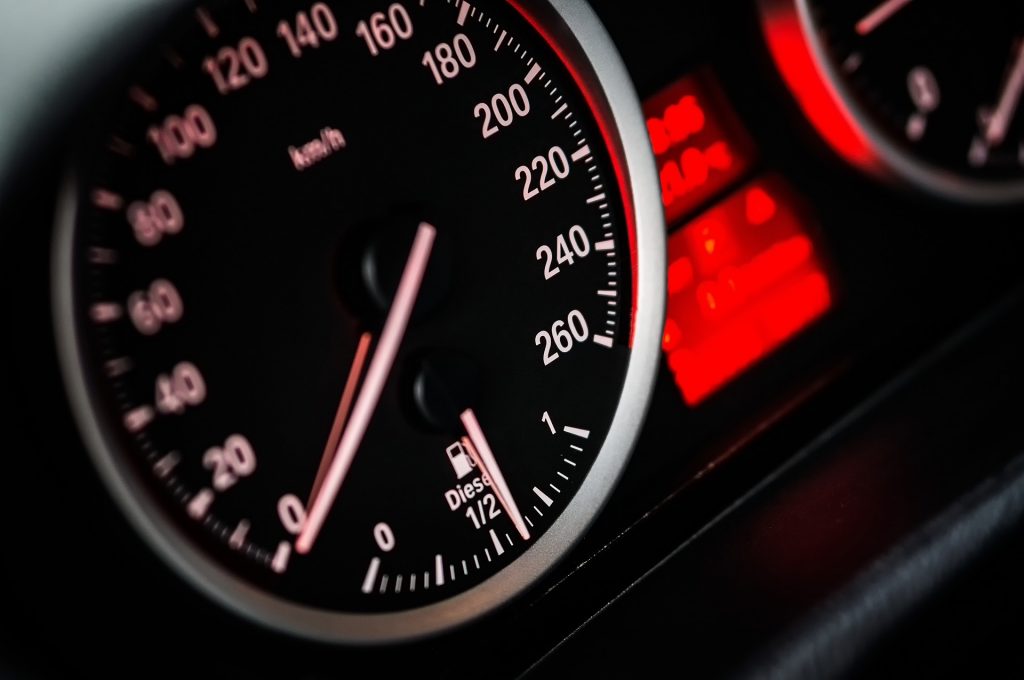
At the pump, gasoline costs more than $4 a gallon. If you want to save money on your commute, you may want to consider slowing down.
Filling up the gas tank doesn’t sound like something anyone really enjoys doing. In the end, it feels like you’re just wasting your time. If you get gas on your hands or shoes, you will smell like it for the remainder of the day. Additionally, you must pay for it too with fuel prices over $4 a gallon (and as high as $6 in certain regions), we are all too aware that gasoline is not cheap.
When you drive quickly, you consume more gas, which costs more money. If you drive slower, you will consume less gas and so save money. However, you will also waste time—time that you could be earning money at work. There should be an optimal speed at which the overall cost of driving (gasoline plus missed work) can be minimized. This minimum cost is determined by the fuel efficiency of your automobile and your hourly wage.
Speed and Fuel Efficiency
If you start your engine and allow it to idle for a while, you are still consuming fuel. (Electric vehicle drivers are exempt from this requirement.) At zero miles per hour, your gas mileage will be zero miles per gallon (mpg), as you have traveled nowhere. Increasing your speed to 10 mph will also improve your fuel efficiency, as 0 mpg is the lowest possible. However, it may not provide the optimum gas mileage. Your automobile is still consuming gas to power the engine (as well as the air conditioning and your extremely loud radio), and you are not traveling quite far.
Once you reach considerably higher speeds, additional factors contribute to your inefficiency. One is the total amount of air that your car is now pushing against as it moves. Your engine must work harder to rotate your tires and continue driving the automobile ahead in the face of this opposition. You can experience the effect of air resistance by shifting your automobile from drive to neutral and releasing your foot from the brake while traveling on flat ground. Due to this interaction with the air, the car will begin to slow down.
With increasing speed, the size of this backward-pushing force, dubbed air drag, increases. If you extend your palm out the window of a moving car, you may feel this drag. When the car is driven slowly, that force is barely noticeable. It is fairly significant at highway speeds.
(If you’re curious, the paper is titled “Predicting Light-Duty Vehicle Fuel Economy as a Function of Highway Speed.”)
It demonstrates that more fuel-efficient vehicles (such as the EPA’s 50-mpg model) are more affected by an increase in speed. However, a 40-mpg vehicle is still preferable to a 30-mpg vehicle. Why is it that an increase in speed has such a negligible effect on lower-mpg vehicles? This is because if you start at 30 miles per gallon, you can only decrease by 30 miles per gallon until you reach zero miles per gallon. They do not have as much room to get terrible mileage.
Time is precious
Let’s have a look at how long it takes to get to and from work. There is no doubt that if you drive faster, you will arrive sooner. Allow me to put myself in your shoes. People go to extremes all the time—even if you don’t believe it. If I set my cruise control for 70 mph, how long will it take me to get here?
If we utilize a distance (x) in miles and a speed (v) in miles per hour, the time will be in hours. At 70 mph, my journey duration is 34.29 minutes.
What if you were to repeat the drive at a speed of 65 miles per hour? In that situation, 36.92 minutes are required. Yes, that is a massive 157.8 second-time differential. That is not even a single song on the radio.
However, how much money do you “waste” by taking a few extra minutes to go to work? Let us perform another straightforward computation. Assume your job pays $20 per hour. By driving 5 mph slower, you gain 157.8 seconds of idle time in your car. (Assume that driving slower results in you clocking in late and forfeiting hourly pay.) Of course, you might make up for a lost time by departing earlier, but that comes at a cost—sleep.) Converting the time to hours and minutes, it equals 0.0438 hours. This would be slightly more than 87 cents per hour at a rate of $20 per hour.
Now we must combine these two concepts (travel speed and hourly wage) to obtain a generic phrase for the money “spent” on your commute. Assume your pay rate (in dollars per hour) is R and your earnings are P. Then P equals Rt. Now we must combine these two concepts (travel speed and hourly wage) to obtain a generic phrase for the money “spent” on your commute. Assume your pay rate (in dollars per hour) is R and your earnings are P. Then P equals Rt.
Using the time expression from above (which is based on speed and distance), the following result is obtained

Bear in mind that this is the amount of money you would effectively lose. The further you travel and the more you earn every hour, the more money you will lose. You will lose less money if you drive quicker (increasing v).
Finally, it’s clear that time is money. However, gasoline is also a form of currency. Thus, conserving gasoline is analogous to conserving time.
Naturally, the simplest answer to this issue is to work from home. Alternatively, if this is not feasible, sleep in your office.
.


[…] Must-Know Things Before Buying an Electric Bike How to Save Gas and Money – Is There Really an Optimal Speed ? 7 Most Useful Robots for Restaurants # car inventions# future technology# gadgets# life […]